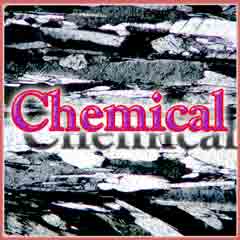 Chemical Sediments
Chemical Sediments
evaporites emplaced in carbonate sediments (figure below) through supratidal evaporation and from standing bodies of water. Supratidal flats of the Holocene arid areas of the United Arab Emirates (Butler et al 1982; and Kendall & Warren 1988) is a well know example of this.
Traverses of these flats traced landward show the precipitation of gypsum in the near surface sediments with anhydrite occurring upslope on these falts. A halite crust caps the surface. The gypsum may form individual displacive crystal laths or layers of mush, whereas anhydrite occurs in contorted layers or as nodules. The origins of the brines associated with these minerals and the associated dolomitization of the aragonitic marine carbonates is thought to be both marine groundwater influxing from the adjacent Arabian Gulf (Patterson and Kinsman 1977; and Butler et al 1982) and subsurface brines coming from the adjacent Oman Mountains (Wood et al 2001).
Where the sulphates precipitate in standing bodies of water, for instance isolated coastal lagoons or playas, they form horizontal layers that parallel the sediment-water interface. The occurrence of evaporites at the updip side of a carbonate shelf or platform is important to the hydrocarbon industry since the evaporites often form the updip seals to reservoirs developed in dolomitized shelf carbonates (Kendall & Warren 1988).